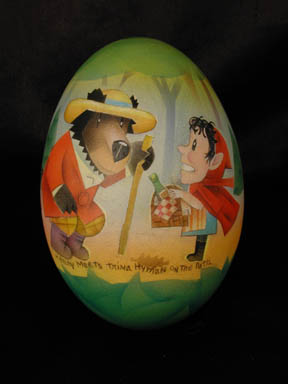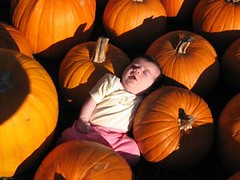The Long Gone Lonesome History of Country Music by Bret Bertholf. Little Brown and Company. $18.99Maybe I should have a rule that if you can’t find the cover of an upcoming book online, you shouldn’t review it. Maybe. I’ll get back to you on that one. The thing is, I would have waited too if this book weren’t so fan-freakin’-tastic. I literally whined, moaned, and groaned so loudly that Little, Brown & Company felt morally compelled to shut my yawp by sendin me an ARC.
Now I am not what you would call a big fan of country music. I know my basics, and I’m vaguely aware of its history, but truth be told country is not all the prevalent on my iPod. So the question I have to ask myself here is, do I feel sufficiently qualified to read and review a children’s non-fiction picture book with the title, “The Long Gone Lonesome History of Country Music”? I mean, if I don’t know my Charlie Rich from my Johnny Bond, how am I going to be able to sufficiently judge how well author/illustrator Bret Bertholf has convered this particular genre’s highs and lows? In this particular case, I have my ever-loving, country listenin’ husband to turn to. Side by side we read through Bertholf’s book and came to a single conclusion. For all its flaws, and there are one or two, this is a jaw-dropping piece of history. The pictures are stunning (if occasionally difficult to make out), the facts always interesting, the history correct, and the storyline faithful. Add in the fact that Bertholf has managed to literally give face to almost every single person who ever even THOUGHT about singing about their mean-eyed cat and you’ve a book that looks, acts, and is like no other.
Did you know that you might be a country singer and not even know it? It’s true. And Bret Bertholf is going to show you why. Concentrating the whole of his attention on the American South, the book dips deep into the past to talk about how people would kill time in the olden days. There wasn’t a lot to do, aside from creating your own music. Then, slowly, technology began to change everything. There was the radio and the record players. Those, in turn, led to the first country music star, Jimmie Rodgers. Time goes by and different musical forms like gospel, jazz, and honky tonks changed how the music sounded. WWII came, the singing cowboy was born, and Nashville grew and grew. With humorous asides, ridiculously in-depth pictures, and more than its fair share of humor, the book shows exactly how country music came to be, and where its future may lay someday.
This is Bret Bertholf’s first solo picture book and I would like to point out that the man has credentials out the wazoo. From the bookflap I’ve learned that not only can Mr. Bertholf yodel (no mean feat) but he’s also a part of the group named
Halden Woford and Hi-Beams. You may have heard them on
A Prairie Home Companion in the past. The book reflects what is obviously his long-standing love for the heroes of the country world. Obviously at some point Mr. Bertholf thought to himself that it would be a shame to mention only some country music stars and not others. The solution? Endpapers. Starting with 1920, every year since that time is given one train car and one singer/musician sitting on top. Each person is presented like a well-rendered bobblehead doll, their features recognizable and (mostly) cheery. My husband assures me that in many cases, the year that a particular star rides does not always correspond to when they really hit it big. There’s also an inclusion of Bing Crosby that’s sure to have a purist or two scratching their heads. The train ends, curiously enough, with 1999. I suppose the author didn’t want to judge too soon the more contemporary stars of today. Could it have killed him to include a Dixie Chick, though? That's a personal beef. Not a professional one.
Every face in this book is different. Every single one. That may not sound like much, but once you begin to notice it, it takes on a certain appeal. My favorite image of the book was a remarkable shot of people standing in line for soup during the Depression. Bertholf, in his agreeable fashion, explains the basics of what happened by offering up a hypothetical situation where a person has handed all their money to Stocky Margaret. But take a gander at the faces in the line. There are at least seventeen of them and each one is different, historically accurate, and deeply realistic. Now turn to the Nashville section. On stage you can see Jake Tullock breaking it down with Roy Acuff and Ernest Tubb. That’s not the impressive part. The musicians have their back to us and we can see in the dim light the faces of the audience members. Now Bertholf could have made the audience dark or drawn a generic face or two. Instead he has given each person there a personality, a hairstyle in keeping with the times, and, even in some cases, an action. It’s mesmerizing. I have a very hard time looking away from it just to continue writing this review. Wow.
Now the art is wonderful in some ways. You have paper dolls one one page and a kind of fill-in-the-blank songwriting sheet on another. I love Bertholf’s art. I just wish I could show it to large groups of people. Time and time again the artist will proffer fabulous scenes or images or people, yet do so with an incredibly dark earth-toned palette. The illustrations in this book were done with colored pencil, “and Caran d’Ache crayon on Canson pastel paper.” This means they are always amazing. Unfortunately, it also means that they are very very dark. A couple spreads, like a sudden discussion of “Countrypolitan” and Patsy Cline, will lighten up the book once in a while, but more often than not the images are hard to see. If, as a children’s librarian, I want to show a group of kids “The Rules of Bluegrass”, I won’t be able to because the page is so dark brown and grey that it’s almost black. Bertholf obviously created this book with one-on-one parent/child reading in mind. Had he lightened things up a little, though, this would make for an excellent readaloud to whole classrooms. A pity.
For the most part, Bertholf is more interested in pinpointing the important moments and influences on country music than in spending a lot of time talking about some of the implications. This isn’t to say he doesn’t reference that history obliquely. On a two page spread entitled Gospel Roots we see two different gospel choirs. One the left-hand page are white singers like Bradley Kincaid and Abby Hutchinson. On the right-hand page is a black gospel choir, segregated from the white choir and containing members like Bessie Smith and Thomas A. Dorsey. You won’t get an explanation of why the Confederate flag still flies or even of how racism has influenced the music throughout the years. That isn’t to say, however, that Bertholf isn’t going to allude to it once in a while.
Now when it comes to non-fiction, kid-appeal is key. If you can wrangle a child into getting interested in a subject that they may or may not have cared for right from the start, you’re worth your weight in kiddie lit gold, my friend. Mr. Bertholf most certainly falls into that category. First of all, the aforementioned pictures, for all that you probably couldn’t make them out from a distance of five feet, are wholly entrancing when seen up close and personal. Apparently Mr. Bertholf (and I’m getting this second-hand) lured Little, Brown & Co. into showing an interest in this book with a little two-page spread sent to them entitled, “How To Yodel!” It’s in the finished product, I should add, and it’s quite a magnificent spread. A large mouth, the gutter of the book falling neatly somewhere around the wisdom tooth area, opens as wide as possible as the words, “Don’t Look” and “Where Yodels come from” point to the gaping maw. All kinds of tidbits like this make the book hard for a kid to put down. There’s a section on Country Pets that tells you about Hound Dogs, Hawgs, and the cutest l’il ole Varmints you ever did see. There’s the Big List of Country Names where you take the initials of your real name and come up with your country music alternative (I’m either Cooter Loudbottom or Goober Loudbottom). There are monsters and hot rods and puzzle pieces and all kinds of stuff falling about the place. There's even a peculiar yet adorable "squeezel" that a lot of children will have a fun time finding on one page or another.
Lest you feel from what I’m saying that Bertholf is making fun of the country music genre, allow me to put your mind at rest. Sure, he plays up some of the sillier aspects. The singing cowboys, big hair, and sequin-riddled clothing are all present. At the same time, however, you get a true sense of his respect for the genre at large. The meticulousness of his history and the number of names he’s able to pull out are impressive. I was more than a little disappointed to see that Bertholf did not include a Bibliography of sources, however. I think this was a huge mistake. Libraries that want to classify this book as non-fiction will be all the more reluctant to add it to their collection when they find that the author has not backed up his facts with any reliable texts. And what about kids who want to learn more about country music? Wouldn’t a list of websites, books for further reading, and general articles have fit in like a dream? Sure, there’s a list at the story’s end of all the famous faces that cropped up in earlier pictures, but that does little to bolter the book’s credibility. As I review this title I’m looking at a very early ARC (it’s not even due out until April 2007). That leaves plenty of time to slap together Bertholf’s sources and come up with a kick-ass Bibliography, yes? I sure hope so.
The book changes constantly from spreads that are horizontal to those that are vertical, but I don’t feel that this upsets the nature of the reading any. Just keeps you on your toes. Now, I know that I haven’t even mentioned half the stuff you’ll find in this book. It’s detailed within an inch of its life and if I had more time I’d talk to you about the peculiar look Bob Dylan sports in this title, or the fact that Dolly Parton’s boobs are, to put it mildly, unrecognizable. But I can’t cover everything Bertholf has done, and that’s okay. It just means that when April rolls around you’re going to have to remember to seek out and read THE most memorable country music picture book for the kiddies. It has its flaws, but they don’t keep it from being the best of the best. Keep your eyes peeled.
On shelves April 1, 2007.
Labels: 2007 Non-Fiction Picture Books, little brown and co.














